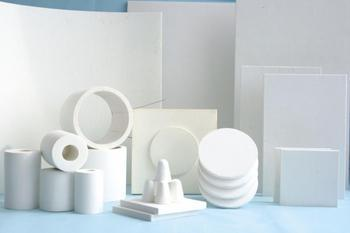
RESEARCH
Application of silica sol in amorphous refractory materials
2023-03-29 10:24

Silica sol is a new development of refractory binder. When using silica sol as a binder, it will not introduce low melting point oxides into the refractory material, thus improving the high-temperature performance of the refractory material. Refractory materials using silicon melt as a binder have the advantages of high strength, good high-temperature volume stability, and good thermal shock resistance, thereby improving the construction performance and service life of the material. Therefore, they have been promoted and applied in amorphous refractory materials.
1. Application of silica sol in mud injection
The technology of rapid repair of blast furnace bodies using pressed mud has been widely promoted and applied in China. In recent years, silica sol has been chosen as the binder for the pressed material, and the performance of the pressed material combined with silica sol is much better than that of resin. Moreover, the pressed material combined with silica sol from production, construction to application does not pollute the environment and poses no harm to the health of construction workers. Therefore, the pressed mud combined with silica sol is an environmentally friendly material.
2. Application of silica sol in aluminum carbide siliceous castables
The use of silica sol in Al2O3-SiC based castables can significantly improve the slag erosion resistance of refractory materials. Using silica sol instead of pure calcium aluminate cement as binder can enhance the flexural strength and compressive strength of Al2O3-SiC castable after heat treatment, and the addition of silica sol is conducive to reducing the formation temperature of SiAlON phase and forming good β- SiAlON phase, thereby improving the strength of the castable.
3. Application of silica sol in corundum mullite based castables
Due to the fact that silica sol is a nano silica colloid with strong specific surface area and adsorption, and the ionization effect in water causes the colloidal particles to carry the same negative charge, resulting in repulsion between particles. This characteristic enables castables using silica sol as a binder to have excellent flow performance. After heat treatment, colloidal particles are combined with chemical bond Si-O-Si to form a stable spatial network structure. At the same time, silica sol is covered on the surface of solid particles to form a solid silica gel film, thus enhancing the bonding, curing and bonding strength of materials. Therefore, castables using silica sol as a binder have high bonding strength at medium to low temperatures, meeting the requirements of industrial furnace lining construction.
4. Application of silica sol in corundum based castables
When using silica sol as the binder for corundum castables, the flow value of the castable increases with the increase of silica sol content. When 7% silica sol is added, the castable already has good flow performance. The hot bending strength of corundum castables bonded with silica sol at 1400 ℃ is higher than that of those bonded with cement. This is mainly because the cement bonded sample reacts with impurities such as SiO2 in the system at high temperatures due to the introduction of CaO, forming a low melting point phase; The silica sol bonded castable sample, due to the absence of CaO in the system, not only does not produce low melting point phase substances at high temperatures, but also forms a small amount of high melting point mullite phase, improving its thermal strength.
5. Application of silica sol in lightweight insulation castables
The alumina hollow ball castable with silica sol as the bonding agent uses the mullite crystal with network structure formed in the matrix by the reaction of nano-SiO2 in silica sol and Al2O3 in the castable at high temperature, which overcomes the disadvantage of poor bonding ability between cement and alumina hollow ball castable, so that the castable not only has good high-temperature resistance, but also has good strength at room temperature and high temperature, Good thermal shock resistance and volume stability, resulting in excellent usability.
In summary, silica sol bonded refractory materials have been promoted and applied in amorphous refractory materials due to their excellent construction and usage performance, and have achieved good usage effects, bringing high economic benefits to users.
